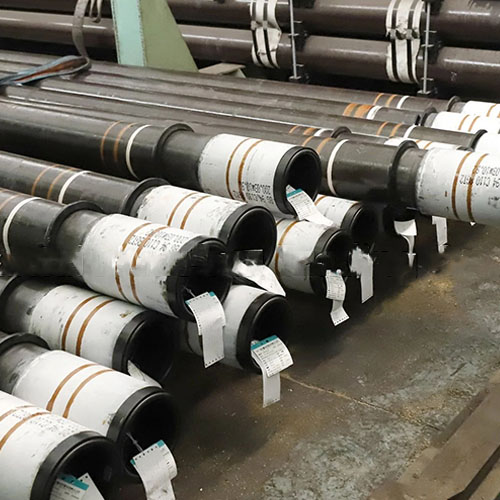Table of Contents
Differences Between SAE 1020 and 1045 Steel Pipes
Steel pipes are essential components in various industries, serving critical functions in infrastructure, construction, and manufacturing. Two commonly used materials for seamless steel pipes are SAE 1020 and 1045. Understanding the differences between these materials is crucial for selecting the right pipe for specific applications.
SAE 1020 and 1045 are both Carbon Steel grades, but they differ in composition and properties. SAE 1020 steel is a low carbon steel with a carbon content of around 0.20%. It is known for its excellent weldability, machinability, and formability. On the other hand, SAE 1045 steel contains a higher carbon content of approximately 0.45%, making it a medium carbon steel with increased strength and hardness compared to SAE 1020.
One of the key distinctions between SAE 1020 and 1045 steel pipes is their mechanical properties. SAE 1020 steel pipes have lower tensile strength and yield strength compared to SAE 1045 steel pipes. This difference in strength is primarily due to the variance in carbon content between the two materials. While SAE 1020 steel is more ductile and easier to form, SAE 1045 steel offers higher strength and wear resistance, making it suitable for applications that require greater structural integrity.
In terms of hardness, SAE 1045 steel pipes are harder than SAE 1020 steel pipes due to the higher carbon content. This increased hardness provides better wear resistance and durability, making SAE 1045 steel pipes suitable for applications subjected to heavy loads and abrasive conditions. Conversely, the lower carbon content in SAE 1020 steel results in a softer material that is easier to manipulate and shape.
Another important factor to consider when comparing SAE 1020 and 1045 steel pipes is their weldability. SAE 1020 steel, with its lower carbon content, exhibits excellent weldability and can be easily welded using various methods. In contrast, SAE 1045 steel, with its higher carbon content, requires preheating and post-weld heat treatment to prevent cracking and ensure proper weld integrity.
While both SAE 1020 and 1045 steel pipes are commonly used in applications requiring seamless pipes, the choice between the two materials depends on the specific requirements of the project. SAE 1020 steel is ideal for applications that prioritize formability, weldability, and cost-effectiveness, while SAE 1045 steel is preferred for applications that demand higher strength, hardness, and wear resistance.

In conclusion, the differences between SAE 1020 and 1045 steel pipes lie in their carbon content, mechanical properties, hardness, and weldability. By understanding these distinctions, engineers and manufacturers can make informed decisions when selecting the appropriate material for their projects. Whether it’s for structural support, fluid transportation, or boiler applications, choosing the right steel pipe material is essential for ensuring the success and longevity of the project.
Benefits of Using Seamless Steel Pipes for Fluid and Boiler Applications
Seamless steel pipes are a crucial component in various industries, particularly in fluid and boiler applications. These pipes are manufactured from raw materials such as SAE 1020 and 1045 steel, known for their durability and strength. The seamless design of these pipes offers numerous benefits that make them an ideal choice for large diameter, thick wall applications like Sch40 and Sch80 seamless fluid and boiler steel pipes.
One of the primary advantages of using seamless steel pipes is their enhanced strength and reliability. Unlike welded pipes, seamless pipes are formed without any seams or joints, making them less prone to leaks and failures. This seamless construction also ensures uniformity in the pipe’s structure, resulting in a higher level of strength and integrity. As a result, seamless steel pipes are better equipped to handle high-pressure and high-temperature applications commonly found in fluid and boiler systems.
Furthermore, seamless steel pipes offer superior corrosion resistance compared to other types of pipes. The absence of seams and joints reduces the risk of corrosion along these vulnerable areas, ensuring a longer lifespan for the pipes. This corrosion resistance is essential in fluid and boiler applications where exposure to moisture, Chemicals, and high temperatures can accelerate the deterioration of traditional pipes. By using seamless steel pipes, industries can minimize the risk of corrosion-related issues and maintenance costs.
In addition to their strength and corrosion resistance, seamless steel pipes are known for their smooth interior surface. The seamless manufacturing process results in a uniform and smooth inner diameter, which reduces friction and pressure loss within the pipe. This smooth surface also minimizes the accumulation of debris and contaminants, ensuring a clean and efficient flow of fluids in the system. As a result, seamless steel pipes are preferred for applications where fluid purity and flow rates are critical.
Another key benefit of seamless steel pipes is their versatility and adaptability to various operating conditions. These pipes can withstand extreme temperatures and pressures, making them suitable for a wide range of fluid and boiler applications. Whether it’s Transporting water, oil, gas, or steam, seamless steel pipes offer the strength and reliability needed to ensure smooth operations in diverse industrial settings. Their ability to perform consistently under challenging conditions makes seamless steel pipes a preferred choice for critical infrastructure projects.
Moreover, seamless steel pipes are easier to install and maintain compared to welded pipes. The absence of seams eliminates the need for complex welding processes, reducing the risk of weld-related defects and ensuring a quicker and more straightforward installation. Additionally, the seamless design minimizes the need for frequent maintenance and repairs, resulting in lower downtime and operational costs for industries utilizing these pipes.
In conclusion, the benefits of using seamless steel pipes for fluid and boiler applications are clear. From their enhanced strength and corrosion resistance to their smooth interior surface and versatility, seamless steel pipes offer a reliable and efficient solution for industries requiring high-performance piping systems. By choosing seamless steel pipes made from raw materials like SAE 1020 and 1045, businesses can ensure the longevity, reliability, and performance of their fluid and boiler systems.
